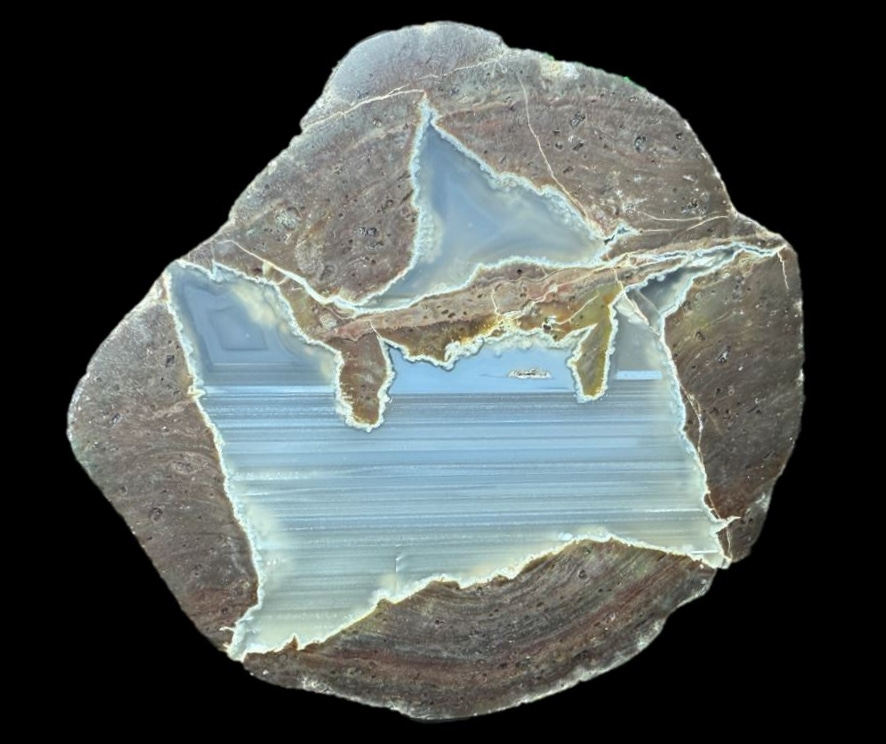I am primarily a mineral collector, but I do have a small number of specimens that don’t really count as minerals per se. This is one of them.
At the Australian National Show, the Gemboree, are a number of tailgaters. A tailgater is a hobbyist or collector that sells off excess things from their collection.
One of the tailgaters had a range of agates, thunder eggs, and other polished items available for sale at very good prices. In fact, these days, it would probably cost you more to cut and polish the specimens yourself.
So why is this? The tailgater in question stated that he had been collecting for over 50 years, and it was time to reduce his collection. As it has always been a hobby for him, he is not interested in making a fortune. This can/has got some dealers’ noses out of joint because they see him as undercutting them.
And what are thunder eggs? Thunder eggs are roughly spherical nodules or geodes that form within volcanic ash layers. They typically have a plain-looking exterior, but when cut open, they can reveal beautiful internal structures. They differ from agates in that they usually have a characteristic jagged shape inside, although they can also have some agate banding too.
Thunder eggs form when silica-rich fluids percolate through volcanic ash and deposit minerals in cavities or voids. Over time, these deposits build up layer by layer, creating the distinctive internal patterns. The outer shell is usually composed of chalcedony, a type of microcrystalline quartz, which gives the thunder egg its rounded shape.
"Tide lines" in thunder eggs refer to the banded or layered horizontal patterns that can be seen within the geode. These lines are formed by the rhythmic deposition of different minerals over time. The process is similar to how sedimentary rocks form, with layers being deposited one on top of the other. In the case of thunder eggs, the layers are created by the precipitation of minerals from solutions that flow through the volcanic ash.
The tide line bands can vary in colour and composition, depending on the minerals present in the solutions that formed them. For example, iron oxides can create red or brown bands, while manganese oxides can produce black bands.
Below: Thunder Egg, Perch Creek, Tweed Valley, New South Wales. It measures 78mm across.




